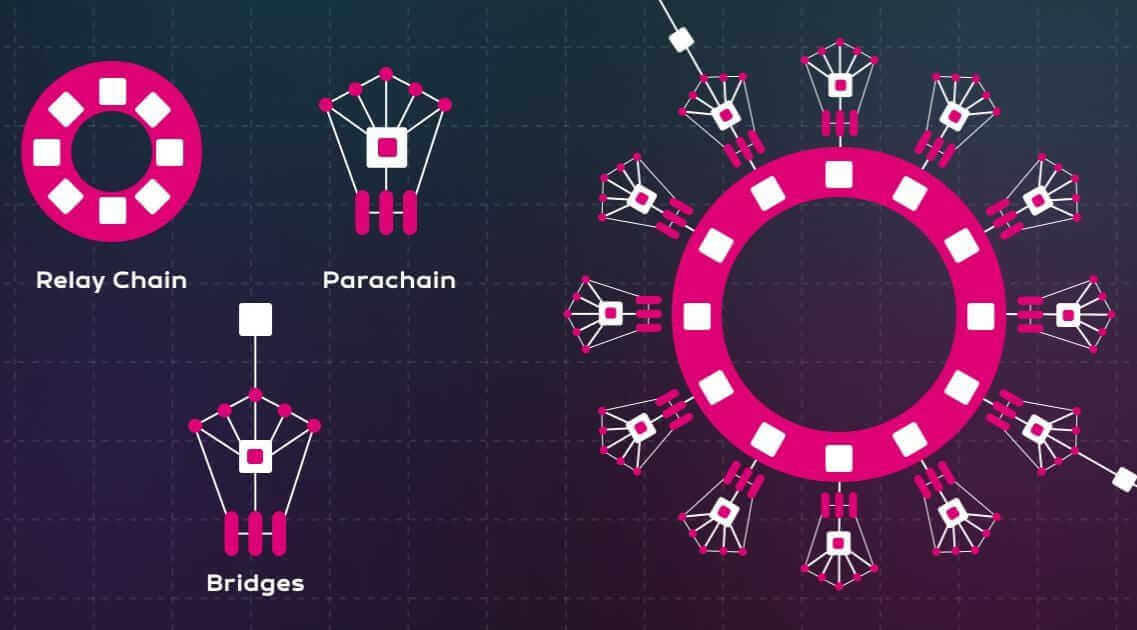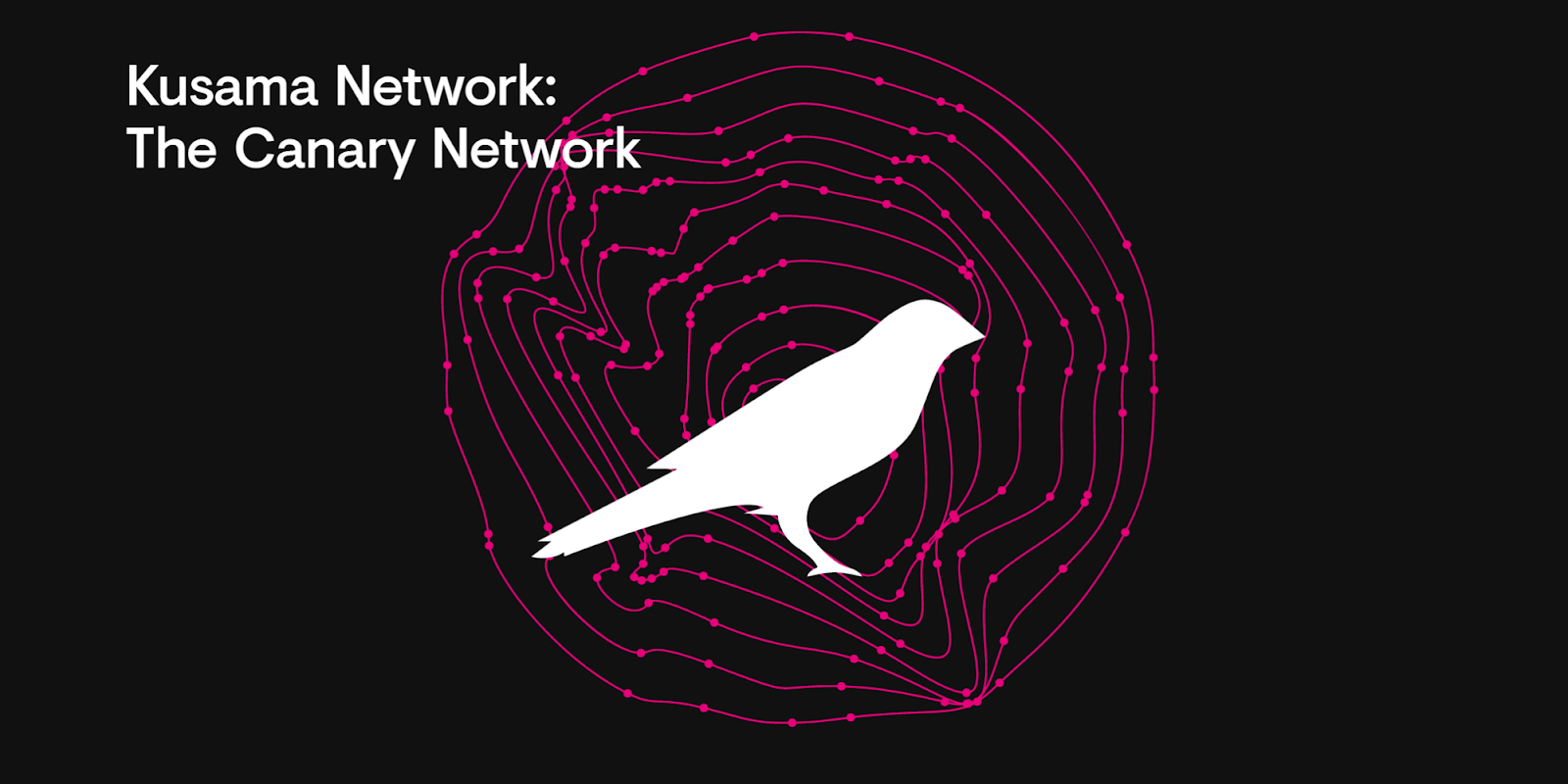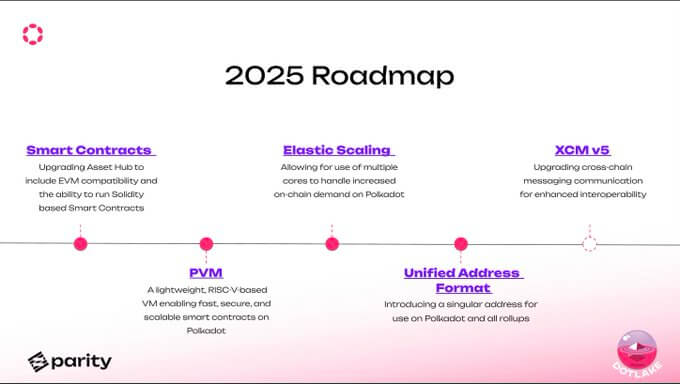The Complete Guide to the Polkadot Ecosystem in 2025



Designed from the ground up for interoperability, scalability, and shared security, Polkadot is more than just another blockchain. It’s a network of networks, connecting dozens of specialized chains, called parachains, into a seamless multichain architecture.
The year 2025 marks a new direction for Polkadot as an ecosystem. The recent platform enhancements together with a growing developer base and practical adoption tools have transformed the ecosystem into a production-ready decentralized finance and identity and gaming and NFTs foundation.
In this article, we’ll explore what makes the Polkadot ecosystem unique, who’s building on it, what’s coming in 2025, as well as Tatum's support for the entire development stack starting from the Relay Chain up to Asset Hubs and testnets.
Polkadot is a layer-0 blockchain protocol that allows multiple blockchains, called parachains, to run in parallel, while relying on a central Relay Chain for consensus and shared security.
By enabling cross-chain communication natively, Polkadot addresses major challenges like scalability, interoperability, and governance that other ecosystems are still struggling with.
At its core is the DOT token, which fuels everything from staking and transaction fees to governance and parachain slot auctions.
Polkadot emerged as a blockchain protocol from the mind of Dr. Gavin Wood who served as Ethereum co-founder and Yellow Paper author. He developed Polkadot as a solution to overcome Ethereum's congestion and fee problems through its design for extendable and specialized and chain-interconnected networks.
Polkadot launched in 2020 and transformed into a dynamic ecosystem through the deployment of numerous live parachains and rising developer engagement and strong infrastructure development.
1️⃣ Relay Chain: The heart of Polkadot. It doesn’t support smart contracts but coordinates the whole system, providing consensus and cross-chain communication.
2️⃣ Parachains: Independent, customizable blockchains that plug into the Relay Chain.
3️⃣ Bridges: Enable Polkadot to communicate with external networks like Ethereum or Bitcoin.
4️⃣ XCMP (Cross-Chain Message Passing): Native protocol allowing parachains to send messages to each other securely and efficiently.

Polkadot stands out because it hosts numerous live parachains which exist as specialized and purpose-built networks that work together.
The DeFi and privacy aspects alongside gaming and identity features of the ecosystem demonstrate its diverse capabilities which support innovation across dozens of projects.
The following section demonstrates how the Polkadot ecosystem operates through real-world applications.
| Category | Parachain | What they’re building |
|---|---|---|
| DeFi | Acala | A decentralized stablecoin platform and DEX |
| Smart Contracts | Moonbeam | EVM-compatible parachain for Ethereum dApps |
| NFTs | RMRK | NFT protocol built natively for Kusama |
| Privacy | Phala | Confidential cloud computing for Web3 apps |
| Identity | KILT | Decentralized identity and verifiable credentials |
| Gaming | Ajuna | GameFi parachain using Unreal Engine |

Many people view Kusama as a test network yet it functions as much more than that. The network operates as a complete blockchain system which features its own economic structure and token (KSM) alongside governance mechanisms and operational parachains.
The Kusama network functions as the first point for new ideas to emerge.
- Early-stage deployment: New features, parachains, and governance experiments launch here first.
- Faster governance cycles: Decisions and upgrades move in 7 days instead of 28.
- Risk-friendly testing: Devs can test dApps, parachain logic, or protocol upgrades in a production-grade environment.
Kusama is not "just a testnet", it's a launchpad for ideas that want to go fast and break things before maturing into Polkadot deployments.
Fun fact: Projects like Karura, Shiden, and Basilisk launched on Kusama long before their Polkadot versions went live.
Tatum supports Kusama Mainnet and the Kusama Asset Hub, giving developers low-friction access to both experimentation and real users.
For developers who want to issue tokens without the complexity of running a parachain or building a smart contract platform, Polkadot Asset Hub is the answer.
Previously known as Statemint, the Asset Hub is a system parachain that makes tokenization easy and efficient.
- Issue fungible and non-fungible tokens (NFTs)
- Transfer assets across parachains via XCMP
- Integrate assets into wallets and dApps
- Leverage shared Relay Chain security
With Tatum, issuing tokens on the Asset Hub is fast, cost-effective, and available via simple API calls.
Example use case: Launch a stablecoin on Polkadot without deploying an entire chain. Just issue it through the Asset Hub, and you're live.

Like Polkadot, Kusama has its own Asset Hub, previously known as Statemine, with the same features and token standards.
It allows developers to test and deploy assets in the Kusama environment first, mirroring how new token standards and features often roll out.
- Launch tokens in days, not weeks
- Lower fees and faster block times
- Great for MVPs, pilots, and creative experiments
Tatum provides a full range of infrastructure services that support the entire Polkadot and Kusama ecosystem including Relay Chains as well as their Asset Hubs and experimental environments. Developers can access every feature from Moonbeam dApp deployment to Polkadot Asset Hub token minting and Kusama prototyping through a unified API layer and RPC Gateway.
Our system delivers fast 30ms latency together with automatic failover features and scalable endpoints to eliminate the challenges of building across multiple chains. The connection process allows you to start building immediately before deploying your project.
| Chain | RPC Endpoint |
|---|---|
| Polkadot Mainnet | https://polkadot-mainnet.gateway.tatum.io |
| Polkadot Asset Hub | https://polkadot-assethub.gateway.tatum.io |
| Polkadot Rococo Testnet | https://polkadot-rococo.gateway.tatum.io |
| Polkadot Westend Testnet | https://polkadot-westend.gateway.tatum.io |
| Kusama Mainnet | https://kusama-mainnet.gateway.tatum.io |
| Kusama Asset Hub | https://kusama-assethub.gateway.tatum.io |

The current year marks the start of Polkadot 2.0,as the project advances through its roadmap by expanding abilities and enhancing developer tools while creating new user interfaces.
The developers have established L1s with native cross-chain messaging capabilities but their focus now moves toward building agile systems and expanding network accessibility.
The upcoming Polkadot updates include Solidity contract support for Asset Hub as well as a Polkadot Virtual Machine for Ethereum compatibility and Elastic Scaling for preventing throughput issues and XCM v5 for enhanced asset transfer predictability.
The builders receive one key benefit from this development which is enhanced power capabilities together with expanded limitations and improved accessibility.
Tatum provides complete infrastructure coverage of the DotSama universe so you are already connected to all upcoming developments with essential tools to develop parachains and begin new projects while ensuring reliable scalability.
Build blockchain apps faster with a unified framework for 60+ blockchain protocols.